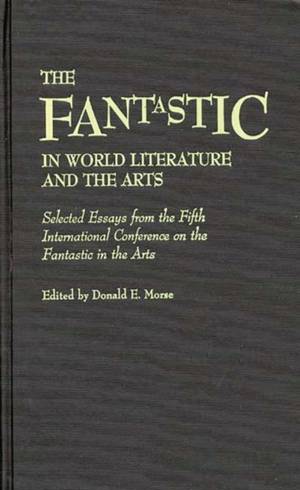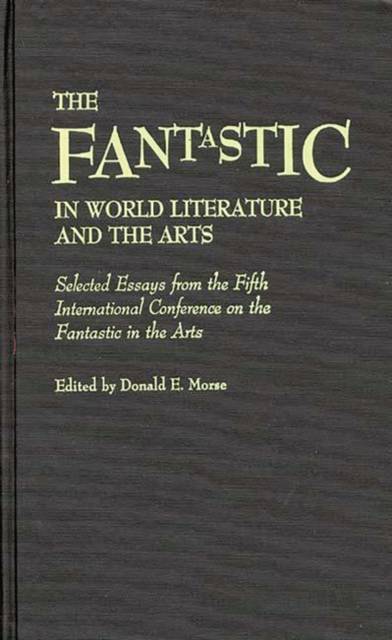
Door een staking bij bpost kan je online bestelling op dit moment iets langer onderweg zijn dan voorzien. Dringend iets nodig? Onze winkels ontvangen jou met open armen!
- Afhalen na 1 uur in een winkel met voorraad
- Gratis thuislevering in België vanaf € 30
- Ruim aanbod met 7 miljoen producten
Door een staking bij bpost kan je online bestelling op dit moment iets langer onderweg zijn dan voorzien. Dringend iets nodig? Onze winkels ontvangen jou met open armen!
- Afhalen na 1 uur in een winkel met voorraad
- Gratis thuislevering in België vanaf € 30
- Ruim aanbod met 7 miljoen producten
Zoeken
The Fantastic in World Literature and the Arts
Selected Essays from the Fifth International Conference on the Fantastic in the Arts
Donald Morse
€ 110,45
+ 220 punten
Omschrijving
From a discussion of the problem of communicating with non-human beings and a review of popular fantastic films to an examination of stage portrayals of Dr. Frankenstein's monster, the essays included reflect and reinfoce the international appeal of the fantastic. Studies on J.R.R. Tolkien, Lewis Caroll, Carlos Fuentes, Edgar Allen Poe, Jorges Luis Borges, and others show how writers, artists, and directors use the impossible as a way of presenting familiar problems and themes--such as the relation of the past to the future or our attitudes towards death--in a new light. Several essays suggest new or newly refined ways of approaching the fantastic in literature from a critical standpoint, while others focus on the visual and kinetic arts. Taken together, the essays accurately mirror the flux and vitality of the current study of the fantastic in the arts.
Specificaties
Betrokkenen
- Auteur(s):
- Uitgeverij:
Inhoud
- Aantal bladzijden:
- 268
- Taal:
- Engels
- Reeks:
Eigenschappen
- Productcode (EAN):
- 9780313255267
- Verschijningsdatum:
- 11/11/1987
- Uitvoering:
- Hardcover
- Formaat:
- Genaaid
- Afmetingen:
- 140 mm x 216 mm
- Gewicht:
- 489 g

Alleen bij Standaard Boekhandel
+ 220 punten op je klantenkaart van Standaard Boekhandel
Beoordelingen
We publiceren alleen reviews die voldoen aan de voorwaarden voor reviews. Bekijk onze voorwaarden voor reviews.











